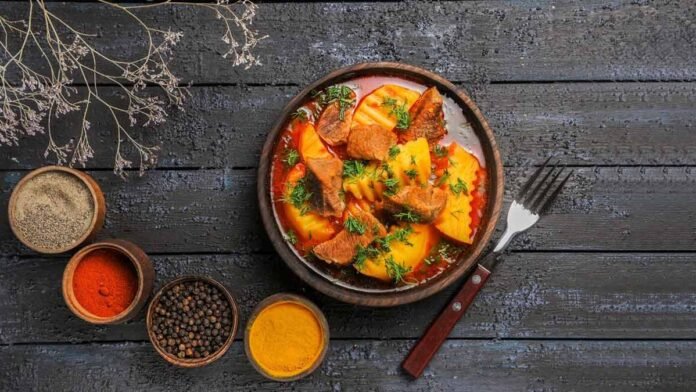Indians cherish their food, with its enormous variety setting it apart from other cuisines. Recently, the experiential online guide Taste Atlas sparked controversy by ranking ten popular Indian foods and drinks as “worst-rated.” The list includes gajak, jaljeera, coconut rice, panta bhat, thandai, achappam, mirchi ka salan, malpua, upma, and aloo baingan, with ratings ranging from 2.7 to 3.2 stars.
This marks the second consecutive time aloo baingan has been rated poorly. In January 2024, the brinjal-potato combination was listed among the world’s 100 worst-rated foods. The recent rankings have rattled many social media users, who responded passionately to the Instagram post announcing the list.
One user expressed strong disapproval, writing, “Unfortunately this list is negligence max. All of our heirloom recipes are on that worst list. Indian culture celebrates seasonal produce. Gajak and Panta Baat are all examples of this. And it fell into the worst list. This is what happens when the world wants to think they know everything about India.”
Critics argue that the ratings are far removed from reality, dismissing the rich culinary traditions that these foods represent. Many emphasized that Indian cuisine is deeply rooted in cultural practices and seasonal ingredients, making it unique and cherished. The inclusion of dishes like upma and aloo baingan, staples in many Indian households, particularly drew ire.
The backlash highlights the broader issue of cultural misunderstandings and the importance of context in appreciating cuisine. Indian food is known for its diversity, with each region offering distinct flavors and specialties. What might seem unappealing to some could be a beloved delicacy to others, deeply tied to cultural and familial traditions.
Despite the criticism, Taste Atlas stands by its ratings, stating that they reflect user reviews and preferences. However, the uproar underscores the need for more nuanced and informed perspectives when evaluating food from different cultures.
Indian food enthusiasts continue to defend their beloved dishes, celebrating the variety and richness that Indian cuisine offers. The controversy serves as a reminder of the subjective nature of taste and the cultural significance of food, urging a more respectful and informed approach to culinary ratings.
The controversy surrounding Taste Atlas’s ratings has sparked broader discussions about cultural representation and culinary appreciation. Indian cuisine, renowned for its complexity and diversity, encompasses a wide array of flavors, textures, and cooking techniques that reflect the country’s vast cultural heritage. Each dish holds significance beyond its taste, often symbolizing rituals, festivals, and familial traditions that have been passed down through generations.
Many defenders of Indian cuisine argue that the ratings fail to capture the nuanced flavors and regional variations that make these dishes beloved staples in Indian households. For example, upma, a savory breakfast dish made from semolina, holds cultural significance in South India and is celebrated for its simplicity and nutritional value. Similarly, aloo baingan, a comforting blend of potatoes and eggplant cooked in spices, is cherished for its hearty flavors and versatility.
The controversy has also reignited conversations about culinary stereotypes and the Western-centric lens through which global food ratings are often assessed. Critics argue that such rankings can perpetuate biases and undermine the diverse culinary traditions of non-Western cultures. They advocate for a more inclusive approach to food criticism that considers cultural context, ingredients, and cooking methods.
In response to the backlash, Taste Atlas has defended its methodology, stating that the ratings are based on user reviews and reflect individual preferences. However, the Indian food community continues to emphasize the need for a deeper understanding and appreciation of their cuisine’s complexities. Efforts to educate and share the stories behind these dishes aim to foster greater respect and recognition for India’s culinary heritage on a global scale.
Beyond the immediate reactions on social media, the controversy has prompted introspection within the food industry and among culinary enthusiasts worldwide. It serves as a reminder of the importance of cultural sensitivity and informed dialogue when evaluating and appreciating diverse cuisines. By embracing and celebrating the richness of Indian food traditions, enthusiasts hope to promote greater understanding and appreciation of global culinary diversity.

